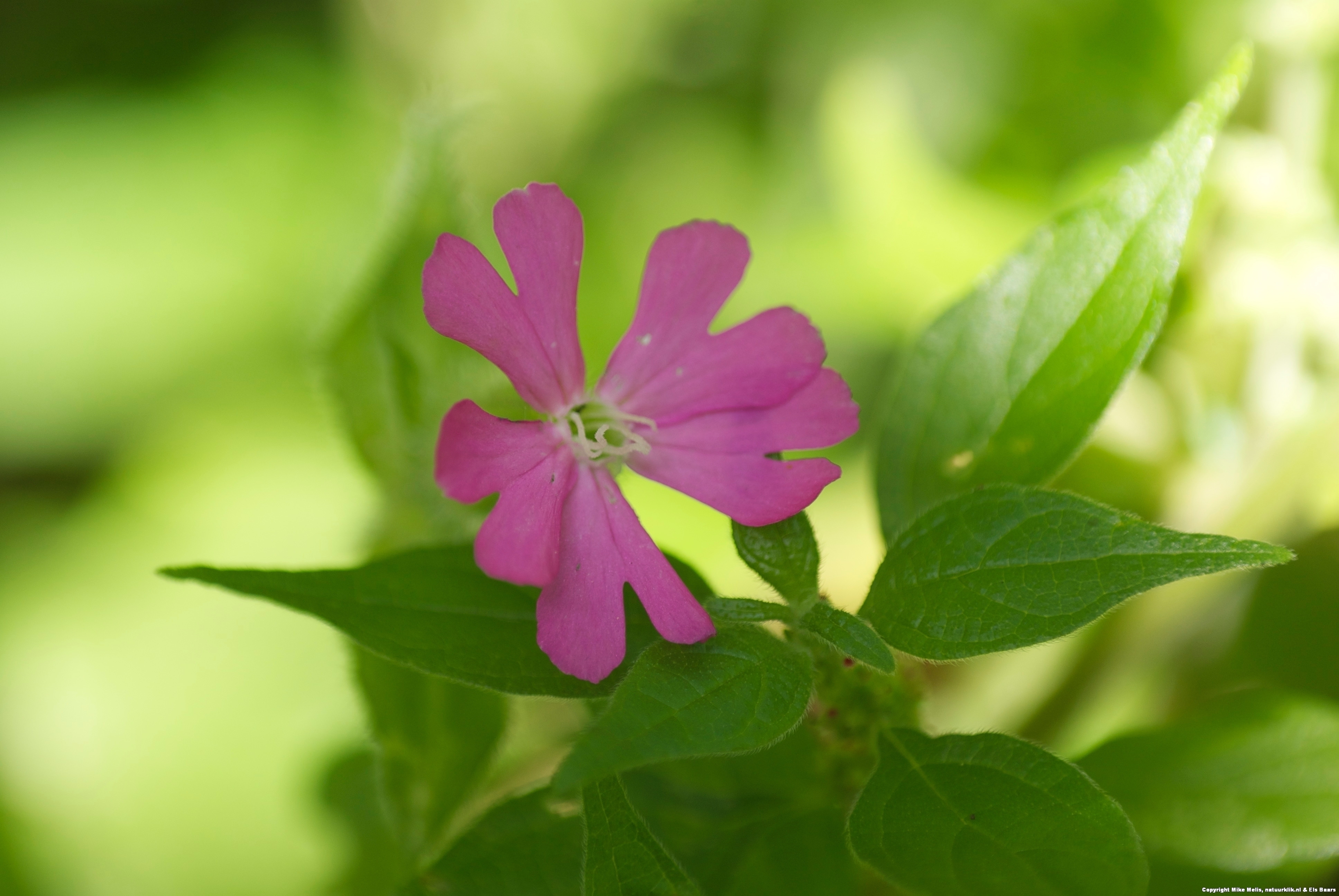In high Summer the banks of ditches and clearings in woods are coloured pink by the profusion of flowering ‘common’ Cuckoo Flowers. Why are the leaves of the ‘real’ Cuckoo Flower so tattered? Does this flower have anything to do with the bird? The answer to these questions is to be found in this tragic love story. Draw closer and listen to my tale ….
Long ago on the edge of a stream not far from some wet meadows there lived a beautiful wise witch by the name of Silene. She always wore magnificent robes of pink and purple. None of the sick people who came from far and wide to seek her advice ever knocked on her door in vain.
In those days there was also a proud wizard known by the name of “Cuculus”. With his beautiful big eyes and his splendid ermine cloak he seduced many a woman. But not even this proud wizard could resist the sparkling eyes of the beautiful witch Silene. He fell for her and left his wife and child to be with her. The witch and the wizard only had eyes for each other and in due course a beautiful daughter was born of this love. The three of them seemed blissfully happy until a new woman appeared in the wizard’s life and he left Silene for her. Without her father’s love, his little daughter pined away.
In her great wisdom the beautiful witch Silene decided that this wizard was a disaster for his offspring and that he should never again be able to disappoint a child through his irresponsible behaviour. She turned him into a dull brown bird which flies clumsily through the sky. To shame him utterly he had to whinge like a small child whinges for biscuits the whole day through, calling “cooky-cooky, cooky-cooky’, so everyone would know that he was that irresponsible bird who had abandoned his own children. But ever since then to ensure that the offspring of the cuckoo should not be left to grow up fatherless, the mother cuckoo lays her eggs in the nest of another pair of birds who will raise them with love and care.
But the wise witch was able to look honestly at her own shortcomings. She was so deeply ashamed that despite all her wisdom she had failed to foresee that the wizard she had seduced would fail as a father. As a result she turned herself into a plant with pink and purple flowers, the colours of her favourite robes.
One beautiful summer day the bewitched wizard Coculus discovered that the witch who had cast this spell on him had also turned herself into these beautiful purple flowers. He was so furious about his own fate as an ugly stupid bird, that he took revenge by pecking the leaves of this pink flower to bits. To this day we can see that the pink flowers of the ‘real’ Cuckoo Flower are indeed ragged, hence the British common name of ‘Ragged Robin’ for this flower. And even now the cuckoo continues to vent his anger on Silene when he gets the chance. That is why we often see the cuckoo’s frothy white spit in the plant’s leaf axils, which is how it earned its name “The Cuckoo Flower”.
There are different types of ‘Cuculi’: known respectively as Red Campion, White Campion and Night-flowering Catchfly as well as the real Cuckoo Flower.The Red Campion is the most well-known and the most common; it grows in rich soil. The Cuckoo Flower grows in wetlands. Strangely enough, the first three types of Cuculi (referred to in Latin as “Lychnis flos-coculi”) belong to another genus (Silenes). The Cuckoo Flower only flowers following the cuckoo’s return to this part of the world. In all probability, the plant derives its name from the frothy white cuckoo spit. The larva of the spittle or spit bug blows air bubbles into its own excrement in which it lives hidden away from its enemies. The cuckoo is one of the last Summer migrants arriving in April or May. It is a so-called ‘brood parasite’: the female lays one egg in the nest of a ’host bird’. Her egg looks almost identical to those of the foster parent. Every year the cuckoo leaves her eggs in the nest of the same bird species, such as the meadow pipit or the hedge sparrow. Only the male bird calls ‘cuckoo’. The cuckoo likes insects and hairy even poisonous caterpillars which other birds do not touch. But sometimes they spit out the caterpillar’s hairs.
© Els Baars, Natuurverhalen.nl

